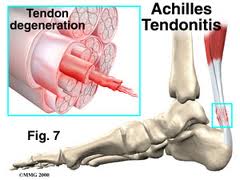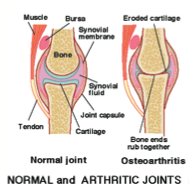Exercise for women 60+ …even a little goes a long way!
A recent study in women aged 60-74, showed that exercising even just two times per week (1 aerobic workout and 1 strength training workout) for 16 weeks can improve aerobic fitness and strength, and reduce fat mass. The greatest benefits were seen in women who exercised four times per week (2 aerobic workouts and 2 strength training workouts). Interestingly, benefits decreased when women exercised six times per week (3 aerobic workouts and 3 strength training workouts).
If you’re a woman 60 years or over, use this study as motivation for safe and effective physical activity levels because even a little bit of exercise can make a difference (just don’t overdo it!). Before starting a new exercise program, make sure your health care professional assesses that you are healthy enough to do so. Exercising is an important step to helping improve your health physically and emotionally, so that you can live your life to the fullest.
So women of all ages: let’s keep moving!
Odette Bulaong, ND
Achilles Pain & Weak Glutes

A recent article by Smith et al ( 2013) has shown that runners with Achilles Tendinopathy (chronic tendinitis) also have a delay in both Glute Mede and Glute Max activation and duration of firing. Unfortunately it does not tell us if Glute inactivity is the chicken or the egg, but from a kinetic chain perspective it does make a great deal of sense. Glute Mede and max are external rotators of the leg, and with out good firing patterns, it can also play a part in pronation (foot flattening out) of the foot. Pronation is one mechanism of causing achilles injuries. Either or, if your unsure have your therapist check for glute mede and max response to load, as well as its endurance if you are suffering from Achilles tendon pain.
Neuromotor Control of Gluteal Muscles in Runners with Achilles Tendinopathy
Smith, Melinda M.; Honeywill, Conor; Wyndow, Narelle; Crossley, Kay M.; Creaby, Mark W.
Medicine & Science in Sports & Exercise: 10 October 2013
Choosing the Right Footwear for the Appropriate Sport
Be sure to wear sport-specific shoes when you play a particular sport for at least three times a week. It is highly recommended that you consult with the Chiropodist to ensure that you are wearing the proper shoe size and type of shoe.
The following are just a few shoe recommendations for different types of sports:-
BASKETBALL
Common foot injuries: sprains, tendonitis, stress fractures
The ideal basketball shoe should:
– Have a thick, stiff sole that gives support while running and landing jumps.
– Have a high ankle construction that supports the ankle during quick changes in direction.
SOCCER
Common foot injuries: ankle sprains, turf toe, ingrown toenails
The ideal soccer cleat should:
– Not have more than a half inch of space between your longest toe and the end of the shoe.
– Feature the stud type for the ground that will be played on most often: soft, hard or firm.
TENNIS & BADMINTON
Common foot injuries: ankle sprains, tendonitis, torn knee ligaments
The ideal court shoe should:
– Have a sufficient amount of heel support. Ensure that the area surrounding the heel is stiff enough and
has adequate padding to prevent injury when making quick changes in direction.
– Ensure that the sole of the shoe is stiff to provide support when running.
–
RUNNING
Common foot injuries: plantar fasciitis, shin splints, toenail conditons
The ideal running shoe should:
– Provide maximum shock absorption, to help runners avoid injuries.
– Match your foot’s arch type (low, medium or high)
Choosing the Right Footwear for the Appropriate Sport
Be sure to wear sport-specific shoes when you play a particular sport for at least three times a week. It is highly recommended that you consult with the Chiropodist to ensure that you are wearing the proper shoe size and type of shoe.
The following are just a few shoe recommendations for different types of sports:-
BASKETBALL
Common foot injuries: sprains, tendonitis, stress fractures
The ideal basketball shoe should:
– Have a thick, stiff sole that gives support while running and landing jumps.
– Have a high ankle construction that supports the ankle during quick changes in direction.
SOCCER
Common foot injuries: ankle sprains, turf toe, ingrown toenails
The ideal soccer cleat should:
– Not have more than a half inch of space between your longest toe and the end of the shoe.
– Feature the stud type for the ground that will be played on most often: soft, hard or firm.
TENNIS & BADMINTON
Common foot injuries: ankle sprains, tendonitis, torn knee ligaments
The ideal court shoe should:
– Have a sufficient amount of heel support. Ensure that the area surrounding the heel is stiff enough and
has adequate padding to prevent injury when making quick changes in direction.
– Ensure that the sole of the shoe is stiff to provide support when running.
–
RUNNING
Common foot injuries: plantar fasciitis, shin splints, toenail conditons
The ideal running shoe should:
– Provide maximum shock absorption, to help runners avoid injuries.
– Match your foot’s arch type (low, medium or high)
Measuring Your Physical Activity Intensity
So, you’re jogging on the treadmill, but don’t know if you’re exercising at an appropriate intensity or pace? A way of determining whether you should modify your intensity level is to use the Rating of Perceived Exertion Scale.Using the Rating of Perceived Exertion Scale helps you to determine the efficacy, as well as the safety, of your exercise program. You want to reach a level of intensity that will induce a training effect, while ensuring that you don’t get to a point when you start to experience adverse effects. Heart rate is commonly used, but it can be influenced by many factors, such as certain medications, environmental conditions, and psychological/mood states. The Rating of Perceived Exertion Scale is a reliable alternative to help you self-monitor your exercise intensity on a minute-by-minute basis, allowing you to immediately modify your intensity by speeding up or down your movements.
So, how do you use the scale? The scale ranges from 0 (you are at rest) to 10 (complete exhaustion). When you’re trying to determine what your current level of intensity is, it is important to consider your overall exertion, not just the soreness of a specific body part. Also, since this is a subjective scale, your own appraisal of your exertion is what’s important – don’t compare yourself to other people! As a guide, moderate intensity is considered to be 4-6 on the 0-10 scale and high intensity is considered as 7-9. Discuss your physical activity goals with a healthcare professional at Form and Function to determine at which intensity level you should be training.
The “talk test” is a simpler version of the Rating of Perceived Exertion Scale. If you can sing during your activity, you’re exercising at a low intensity; however, if you can barely get a word out, without having to take a gulp of air, you’re exercising at a vigorous intensity. Therefore, a moderate intensity is when you are exercising, but can still carry on a conversation.
Using this as a starting point, if over time, your rating decreases or you are able to sing while performing the same activity, then you know that your exercise tolerance has improved – great job!

Sonia
Physiotherapy Resident
Measuring Your Physical Activity Intensity
So, you’re jogging on the treadmill, but don’t know if you’re exercising at an appropriate intensity or pace? A way of determining whether you should modify your intensity level is to use the Rating of Perceived Exertion Scale.Using the Rating of Perceived Exertion Scale helps you to determine the efficacy, as well as the safety, of your exercise program. You want to reach a level of intensity that will induce a training effect, while ensuring that you don’t get to a point when you start to experience adverse effects. Heart rate is commonly used, but it can be influenced by many factors, such as certain medications, environmental conditions, and psychological/mood states. The Rating of Perceived Exertion Scale is a reliable alternative to help you self-monitor your exercise intensity on a minute-by-minute basis, allowing you to immediately modify your intensity by speeding up or down your movements.
So, how do you use the scale? The scale ranges from 0 (you are at rest) to 10 (complete exhaustion). When you’re trying to determine what your current level of intensity is, it is important to consider your overall exertion, not just the soreness of a specific body part. Also, since this is a subjective scale, your own appraisal of your exertion is what’s important – don’t compare yourself to other people! As a guide, moderate intensity is considered to be 4-6 on the 0-10 scale and high intensity is considered as 7-9. Discuss your physical activity goals with a healthcare professional at Form and Function to determine at which intensity level you should be training.
The “talk test” is a simpler version of the Rating of Perceived Exertion Scale. If you can sing during your activity, you’re exercising at a low intensity; however, if you can barely get a word out, without having to take a gulp of air, you’re exercising at a vigorous intensity. Therefore, a moderate intensity is when you are exercising, but can still carry on a conversation.
Using this as a starting point, if over time, your rating decreases or you are able to sing while performing the same activity, then you know that your exercise tolerance has improved – great job!

Sonia
Physiotherapy Resident
Welcome SONIA VOVAN

I would like to officially welcome Sonia Vovan to our rehab team. Sonia has recently graduated from the University of Toronto with a Masters in Physiotherapy, and will be taking on new patients starting this week. Sonias hours are Tue/Thurs 9-7.30 and Sat 9-2. For Sonia’s full bio please click here
Welcome SONIA VOVAN

I would like to officially welcome Sonia Vovan to our rehab team. Sonia has recently graduated from the University of Toronto with a Masters in Physiotherapy, and will be taking on new patients starting this week. Sonias hours are Tue/Thurs 9-7.30 and Sat 9-2. For Sonia’s full bio please click here
Osteoarthritis
As a large number the Canadian population ages, osteoarthritis will become an increasingly common condition. Here is some information regarding osteoarthritis.What is Osteoarthritis?
Osteoarthritis is a degenerative condition that involves the wear and tear of cartilage between joint surfaces leading to exposed bone on bone rubbing. It generally affects people in their 60s or 70s but can also occur in those 50s or younger. It most commonly affects weightbearing joints like knees, hips, neck and back.
 Symptoms may include:
Symptoms may include:
– Pain, especially prior to weather changes
– Stiffness in joints, especially in the morning
– Swelling
– Redness
– Feeling of heat around joints
– Loss of flexibility and mobility
– Tenderness
– Grating sensation between joint
Predisposing factors may include:
– Overweight
– Poor joint mechanics/alignment
– Prior joint injuries
– High impact or repetitive occupations
– Female sex
– Other conditions (like diabetes)
– Lack of regular exercise
Treatment of mild to moderate osteoarthritis involves tailored individualized exercise program that:
– Increase strength to protect the joint and minimize unnecessary rubbing between joints
– Increase or maintain flexibility to help keep joint fully lubricated
– Increase endurance to help increase ability to do functional activities
– Splinting or bracing to offset pressure on joint surfaces
Treatment of severe osteoarthritis often involves surgical intervention if conservative management is exhausted.
If you are experiencing osteoarthritic pain, come in to Form and Function to get assessed by one of our healthcare professionals. We can determine the state of your osteoarthritis and prescribe an individualized exercise program to help you minimize your pain and increase your function. Even if you are not currently experience pain, you may want to get assessed for proper biomechanics to help prevent the onset of osteoarthritis. Being proactive is much better than being retroactive!
Manni Wong
Registered Physiotherapist

